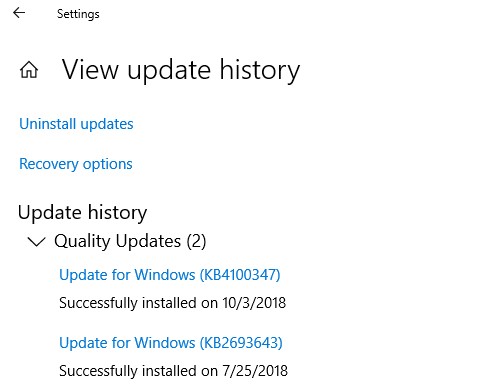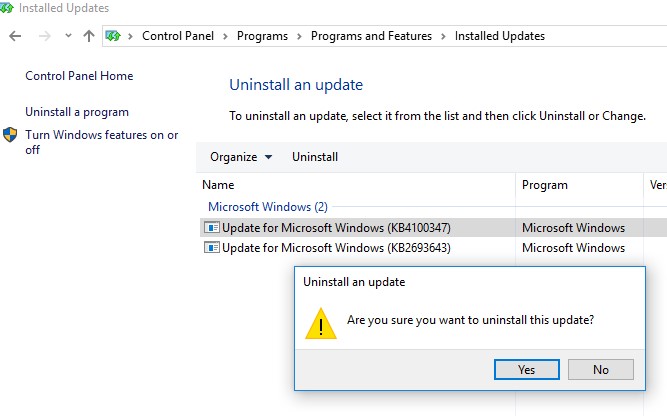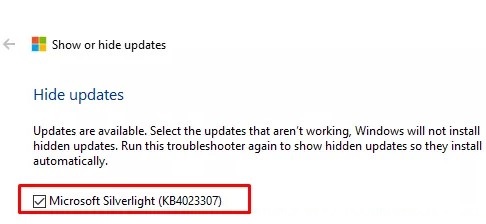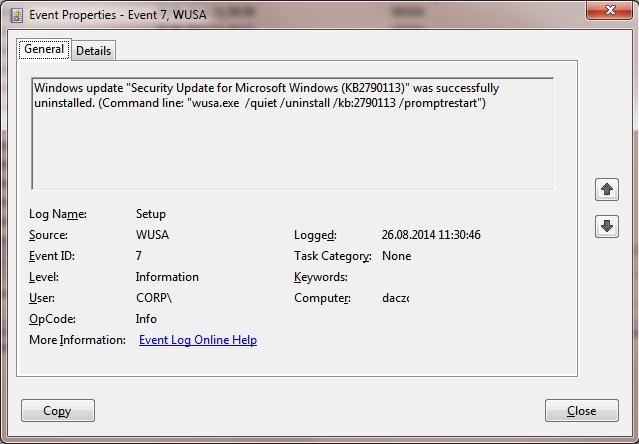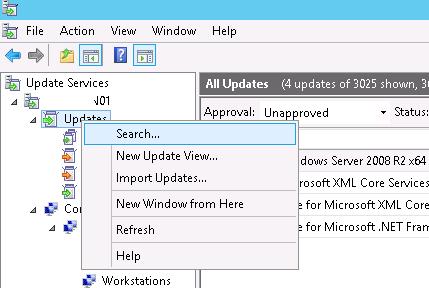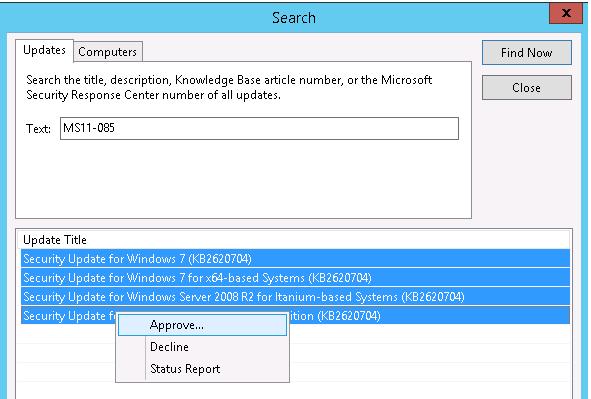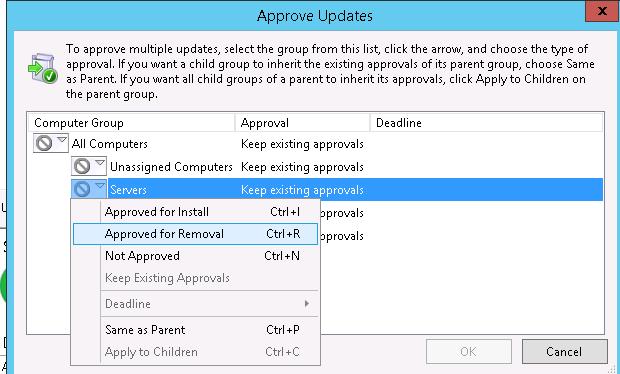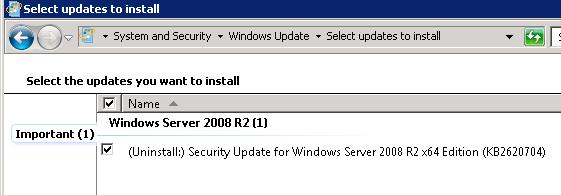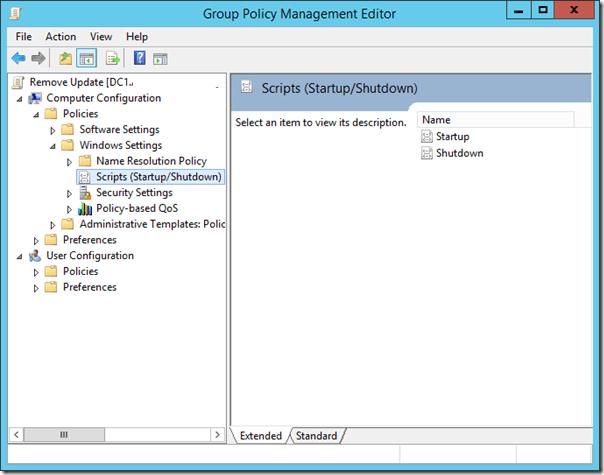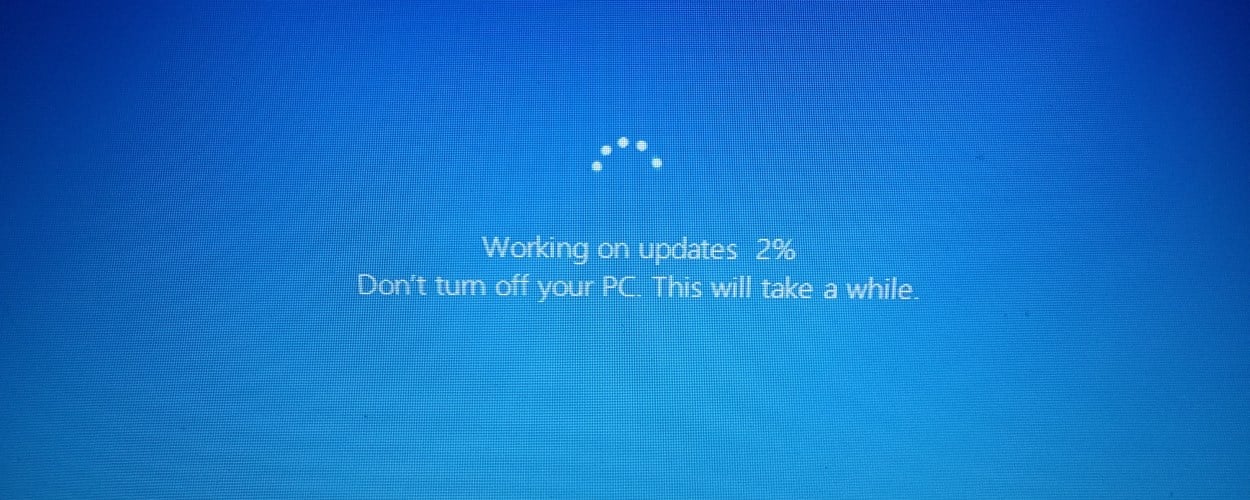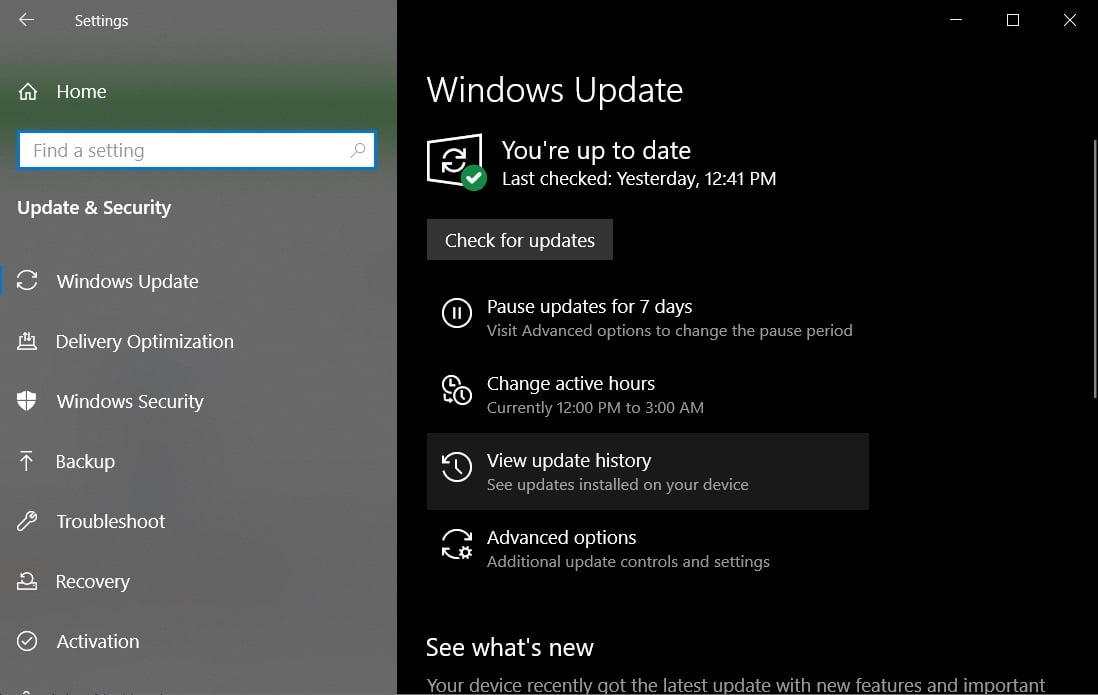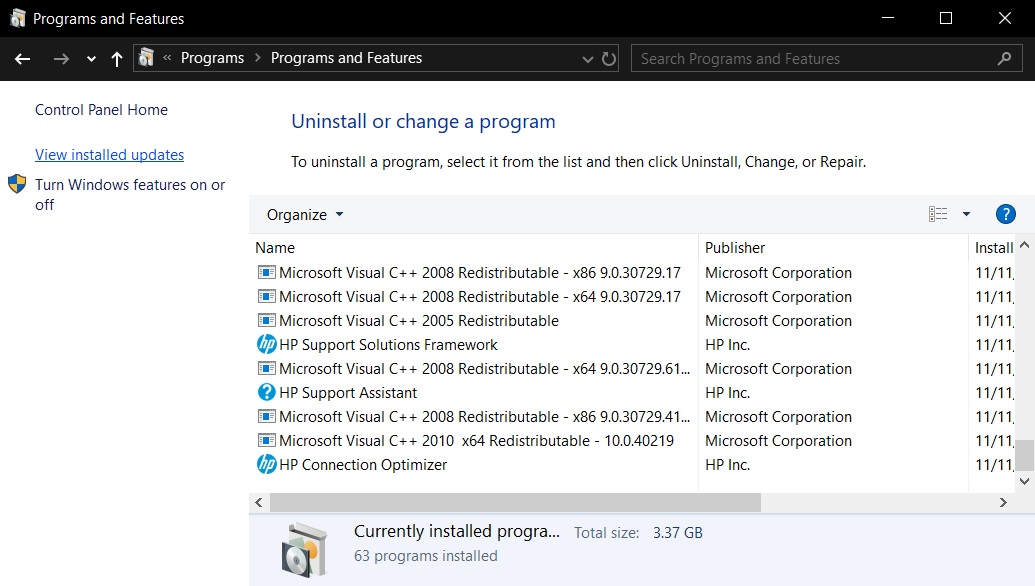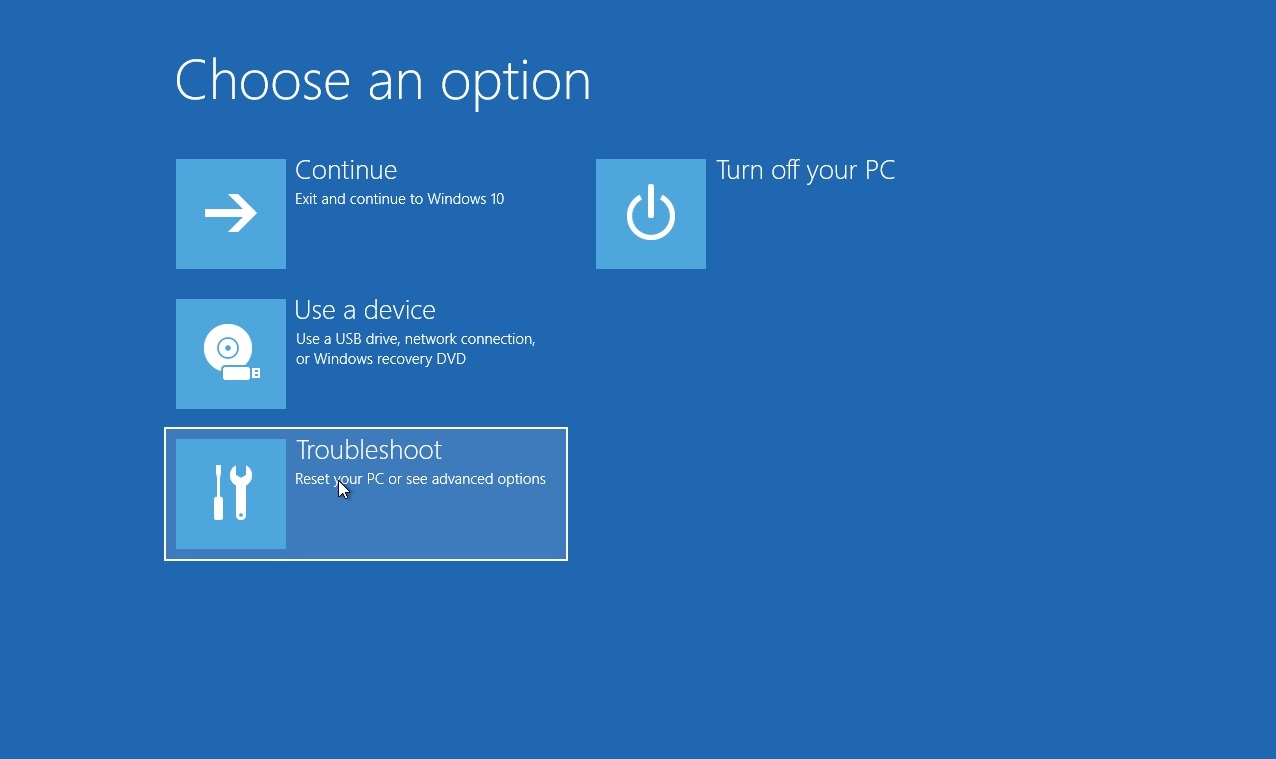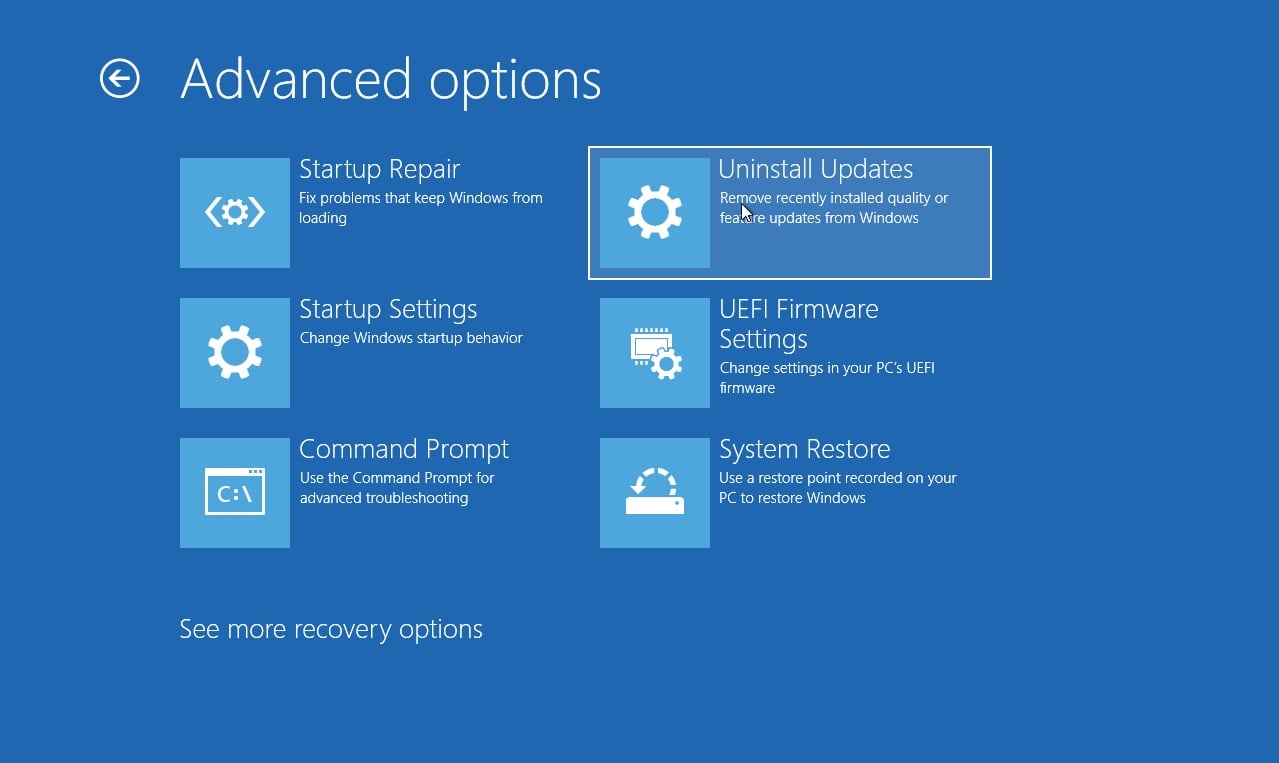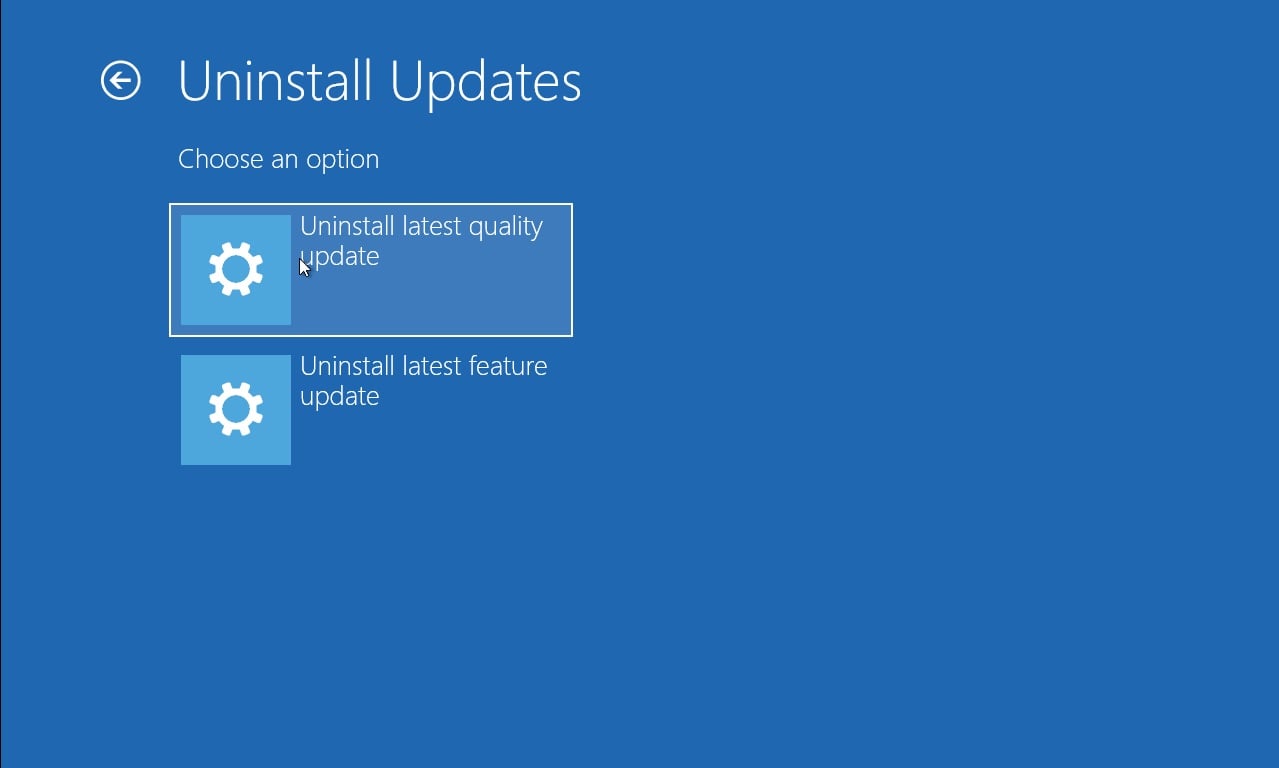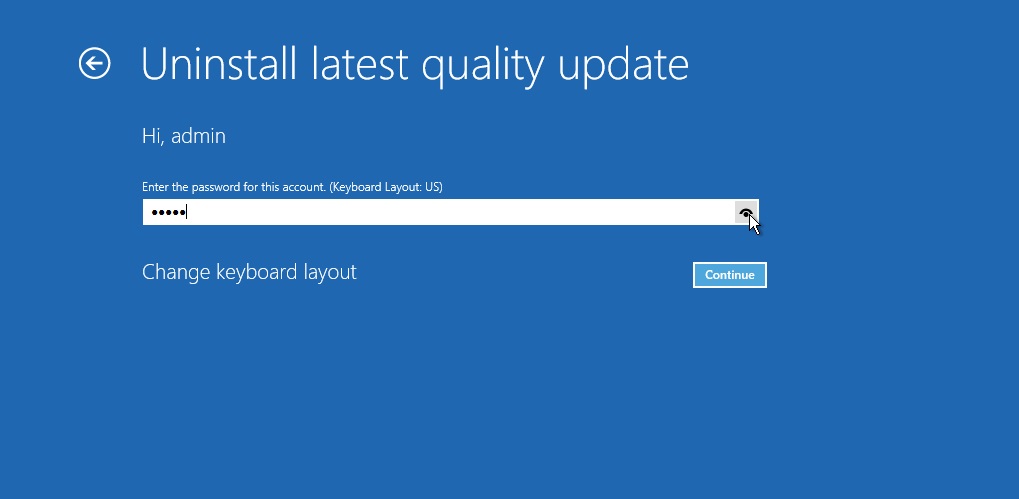- How to Remove Installed Updates in Windows 10 and Windows Server?
- How to Uninstall Windows Updates Using the Control Panel?
- How to Prevent (Block) a Specific Update from Installing in Windows 10?
- WUSA.exe: Removing Windows Updates via the Command Line
- How to Uninstall a Windows Update using WSUS?
- Removing Windows Update Using the GPO
- How To Uninstall Windows Updates When Computer Is Not Booting?
- How to Disable or Remove Automatic Updates in Windows 10
- Do it with the Services tool
- Try Local Group Policy Editor
- Free utilities to disable automatic updates in Windows 10
- How to remove the updates that have already been installed?
- How to Uninstall Windows 10 Updates Manually
- Uninstall Windows Updates with Settings and Control Panel
- Uninstall Windows Update with Command Prompt
- Uninstall Windows Update at Boot with Advanced Options
How to Remove Installed Updates in Windows 10 and Windows Server?
Sometimes it happens that the security updates for Microsoft products (released under MS Patch Tuesday) cause problems with the OS or third-party software. The issues caused by the updates can be either mass and occur in a large number of devices or private that occur in some combinations of the Windows OS version and some apps.
If the Windows (or Office) patch causes a problem on the computers of many users, and this is confirmed by Microsoft experts, the update is pulled by the company and after a while is replaced by a new one with the bugs fixed. But if necessary, in Windows there is a way to uninstall any security update or patch.
In this article we’ll show how to properly uninstall updates in Windows OS (the article covers Windows 10, 8.1, 7 and Windows Server 2016, 2012/R2, 2008/R2). These ways of removing updates can be used if you installed the update manually from a CAB or MSU file, your device automatically received it from the Windows Update servers or your WSUS server.
There are several ways to uninstall updates in Windows (Windows Server):
How to Uninstall Windows Updates Using the Control Panel?
Let’s look on how to uninstall updates in Windows 10. Open the menu Settings app and go to the Update & Security -> Windows update -> View Update History -> Uninstall updates.
You can also go to the “Uninstall an update” panel using the classic Control Panel (Control Panel\Programs\Programs and Features) and press the button “View installed updates”.
A list of all Windows and Office updates installed on your device will appear. Find the necessary update in the list (or, to be more precise, unnecessary :)), select it, click the Uninstall button. The uninstall update wizard starts.
Click Yes when prompted if you want to uninstall this update.
And wait till it is uninstalled. After the update is removed, Windows may request a system restart.
How to Prevent (Block) a Specific Update from Installing in Windows 10?
If your computer is configured to automatically receive Windows updates through Windows Update or WSUS, this update will most likely be installed on your computer again. But you can prevent the installation of a specific update by hiding (blocking) it. To do this, use the official tool Microsoft Show or Hide Updates https://support.microsoft.com/en-us/help/3073930/how-to-temporarily-prevent-a-driver-update-from-reinstalling-in-window
- Download and run the wushowhide.diagcab;
- Select the option Hide Updates;
- Select the update you want to hide and click Next;
- After that, this update won’t be installed in Windows automatically via Windows Update. You can remove the hidden update by selecting it in the Show hidden updates.
WUSA.exe: Removing Windows Updates via the Command Line
Windows updates can also be uninstalled from the command prompt. To do it, there is a built-in CLI tool wusa.exe (Windows Update Standalone Installer).
You can list all updates installed on a computer with the command:
wmic qfe list brief /format:table
Using the following command, running as administrator, you can remove the specific update (KB 4100347):
wusa.exe /uninstall /kb:4100347
A user must confirm the removing of the update.
If the update has to be uninstalled in a quiet mode without a user request and notifying about of the subsequent system reboot, the command will look like that:
wusa.exe /quiet /uninstall /kb:4100347 /promptrestart
If you need to suppress the reboot request, use the command:
wusa.exe /quiet /uninstall /kb:4100347 /norestart
You can also remove the update from PowerShell using the PSWindowsUpdate module. The Remove-WindowsUpdate cmdlet is used:
Remove-WindowsUpdate -KBArticleID KB4100347 -NoRestart
The Windows update uninstall event is recorded to the Setup log with the EventID 7 from the WUSA source:
Using PsExec you can uninstall an update on a remote computer, the command is as follows:
psexec.exe \\RemotePCName C:\Windows\System32\wusa.exe /quiet /uninstall /kb:4100347 /warnrestart:600
How to Uninstall a Windows Update using WSUS?
If a corporate WSUS server is used in your company to install updates on a domain computers and servers, you can remove the update approved for install using the Update Services management console. To do it, right-click the Updates branch and then click Search in the menu.
Specify the KB number or a security bulletin you need to find and click Find now. In the list containing the updates that have been found for different Windows versions, select the updates to be uninstalled and click Approve in the menu.
Then select the WSUS Target group you need and choose Approved for Removal in the drop-down list.
In our example, we want to uninstall update on a group of computers named Servers (more about WSUS GPO targeting).
After updating data on the side of WSUS clients (which occurs on a schedule in accordance with the WSUS policy and the synchronization frequency, which is set by the Automatic Update detection frequency, or can be done manually by running wuauclt /detectnow ) , the corresponding update appears with the prefix (Uninstall:) in its name in the Windows Update panel.
After the update has been uninstalled, this event is displayed in Windows Update History.
Removing Windows Update Using the GPO
If you want to remove a specific update on multiple computers of Active Directory domain that doesn’t use WSUS, you can use Startup/Shutdown GPO scripts.
To do it, create a new GPO object linked to the necessary OU, AD site or computer group. Then create a new startup script with the wusa.exe command in the section Computer Configuration -> Policies -> Windows Settings -> Scripts (Startup/Shutdown).
You can also use PowerShell startup scripts to remove installed updates.
How To Uninstall Windows Updates When Computer Is Not Booting?
Sometimes it happens that you cannot remove an update directly from the Windows, since the OS simply not booting after installing the problematic update. In this case, you may have to boot the computer from the rescue or install boot disk and delete the updates via DISM (see the article “Computer Won’t Start After Windows Update”) or using the “Hotfix uninstall” utility from the MSDaRT.
So, we have covered common scenarios of how to uninstall updates on Windows computers.
How to Disable or Remove Automatic Updates in Windows 10
Read this article to find out how to disable automatic update option in Windows 10. Let’s explore how to remove an unnecessary or faulty Windows update by using integrated system tools or with third-party apps.
Do it with the Services tool
The first method works for Windows 10 Home, Professional and Enterprise.
Type Services in the search field (the magnifying glass icon on the taskbar) and run this system tool.
Find Windows Update service and open its properties.
Click on Stop and select Startup Type – Disabled
After these changes are applied and the computer restarts, Windows Update will not work anymore, so updates won’t be downloaded and installed automatically.
Try Local Group Policy Editor
The second method is only good for Windows 10 Professional and Enterprise. As other versions of Windows lack such component as Local Group Policy Editor.
To start the Local Group Policy Editor, type gpedit.msc in the search field and press Enter.
When in the Editor, go to Computer Configuration – Administrative Templates – Windows Components – Windows Update.
Find the policy Configure Automatic Updates, open it and set it to Disabled. Click Apply/Ok.
Free utilities to disable automatic updates in Windows 10
Also, you can use free utilities to prevent Windows 10 from updating automatically.
As an example, we’ll show you Win Updates Disabler, but there are other tools as well.
Run the program, jump to the tab Disable to check the box next to Disable Windows Updates. After that, click Apply Now for the changes to take effect.
As seen from the screenshot, this program can also disable Windows Firewall and Windows Defender. If necessary, you can turn everything on again in the tab Enable.
How to remove the updates that have already been installed?
If some updates were installed incorrectly, or you want to remove only particular Windows 10 updates, this is also possible.
Go to Control Panel and select Programs & Features.
Jump to the tab View Installed Updates.
Sort them by installation date by clicking on Installed On.
Right-click on one of the updates which you want to delete from the system and click Uninstall.
Confirm your decision and changes will take effect after the system restart.
See the full article with all additional video tutorials. If you still have any questions, please ask in a comments. Also visit our Youtube channel, there are over 400 video tutorials.
How to Uninstall Windows 10 Updates Manually
Mayank Parmar
Microsoft recommends that users keep their Windows 10 installations up-to-date, and while this is a good practice for security, there are times when Windows updates can cause more harm than good. Botched updates can ruin everything, from Start menu to desktop to the Action Center and the complete operating system.
In this guide, we will explain the steps required to uninstall Windows updates that have known issues or that are causing problems on your computer. With this guide you will learn how to remove updates via Settings, Control Panel and a Command Line tool.
Uninstall Windows Updates with Settings and Control Panel
- Open Start menu and click on the cog icon to open Settings.
- In Settings, head into Update & security.
- Click on the ‘View Update History‘ or ‘View installed update history‘.
On the Windows Update history page, click on ‘Uninstall updates‘.
On the next screen, you will be presented with a list of recent Windows Updates. You can sort the list by installation date or you can also search through all of the installed/active updates using the search box at the top right.
If you have noted the Knowledge Base (KB) number of the update, simply enter it in the search box to find it quickly. After determining the update that you want to uninstall, follow these steps:
- Select the update.
- Simply click the ‘Uninstall‘ button.
- Click ‘Yes’ on the confirmation box to uninstall the update.
- A reboot may be required to finish the process.
Uninstall Windows Update with Command Prompt
If you are unable to remove an update from the Settings app or Control Panel, you can also use the Windows Update Standalone Installer, or wusa.exe, command line program to uninstall Windows updates.
In order to use this tool, you will need to know the KB number of the Windows update. If you don’t know the KB number, you can follow this guide to get a list of installed Windows Updates and their KB number.
To uninstall an update, open an Elevated Command Prompt (admin) and then type the following command after replacing the KB ID with the one that you wish to uninstall: wusa /uninstall /kb:[id]
Example: wusa /uninstall /KB:4023057
If you want to uninstall the update without your interaction and automatically restart the computer, you would use the following command: wusa /uninstall /kb:[id] /quiet
Example: wusa /uninstall /KB:4023057 /quiet
If you want to uninstall the update and prompt to restart the computer, use the following command: wusa /uninstall /kb:[id] /quiet /promptrestart
Example: wusa /uninstall /KB:4023057 /quiet /promptrestart
If you want to uninstall the update without a forced system reboot, use the following command: wusa /uninstall /kb:[id] /quiet /norestart
Example: wusa /uninstall /KB:4023057 /quiet /norestart
If you want to uninstall the update and force system reboot, use the following command: wusa /uninstall /kb:[id] /quiet /forcerestart
Example: wusa /uninstall /KB:4023057 /quiet /forcerestart
The use of wusa.exe is particularly useful for system administrators who wish to remove an update for a large amount of computers in a domain through login scripts or other automated methods.
Uninstall Windows Update at Boot with Advanced Options
Finally, if you are unable to start Windows or are dealing with a particularly stubborn update, you can boot into Windows 10 Advanced Startup to remove the update. To use this mode, please follow these steps:
- Open Settings.
- Navigate to Update & Security > Recovery.
- Click on Advanced Startup.
- On Advanced Startup screen, click on Troubleshoot.
Click on Advanced Options.
Click on Uninstall Updates.
On the Uninstall Updates screen, you will see two options — Uninstall latest quality update or Uninstall latest feature update.
In this case, quality updates stand for the monthly cumulative update. The features updates are new versions of Windows 10 such as Windows 10 May 2019 Update and October 2018 Update, which are released twice a year.
After selecting an update to uninstall, enter your login to your Windows 10 account with your username and password.
Finally, click on Uninstall quality update or Uninstall feature update to remove the updates.
Restart the computer when prompted.
After the restart, the Windows update will have been removed.
